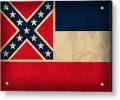

Originally Posted by
slamfire

..
In fact, the tin coating on the bullets of the called 1921 NM ammunition created a dangerous condition by cold welding to the case neck. The intermetallic bond was such that the case neck did not expand to release the bullet. Months before the 1921 National Matches, Townsend Whelen wrote in the Arms and the Man descriptions of tearing cases apart in an attempt to pull bullets from the tin can ammunition. Recently a NRA technical expert said the NRA has a collection of fired bullets from the 1921 NM and these bullets all have case necks attached! Of course rifles blew up at the 1921 National Matches with the tin can ammunition, the Army did not acknowledge the problem was of their making, in fact claimed that the ammunition was perfectly safe....

Originally Posted by
Maj. Dick Culver
Actual firing of the ammunition however, showed normal chamber pressures. It was finally decided that the bullets were "cold soldering" themselves into the neck of the cartridge cases. This unexpected phenomena was causing the extreme effort necessary to extract them using a bullet pulling machine. When fired however, the neck of the case would apparently expand against the neck of the chamber thus breaking the seal of the inadvertent solder job. Once broken free by case neck expansion the projectile was free to be launched without raising the chamber pressure...
...under NO circumstances should they attempt to lubricate the tin-plated bullets! Frankford and Springfield found that the incompressible grease would not allow the neck of the case to expand and release the bullet from the "cold solder job" in the neck of the case. Greasing the bullets had the potential of creating an explosive situation. Needless to say, this advice was handily ignored by many of the old time shooters...
...many continued to lubricate the new ammunition causing several wrecked rifles. In every instance, the cause was traced to the prohibited use of grease on the ammunition. At least one projectile was found downrange with the neck of the cartridge case still firmly attached to the bullet and exhibiting rifling marks on the brass...
http://www.odcmp.org/1101/can.pdf
Phillip McGregor (OFC)
"I am neither a fire arms nor a ballistics expert, but I was a combat infantry officer in the Great War, and I absolutely know that the bullet from an infantry rifle has to be able to shoot through things." General Douglas MacArthur





 Reply With Quote
Reply With Quote



